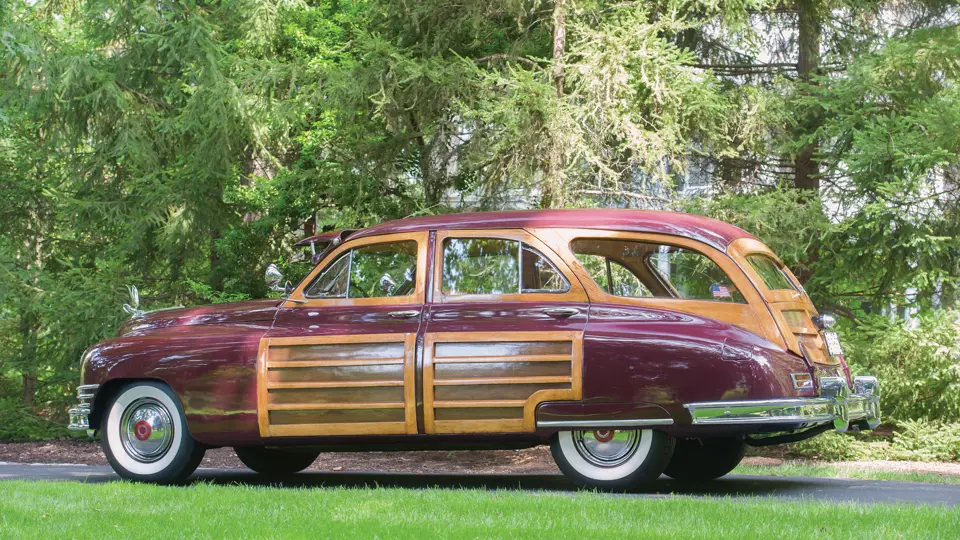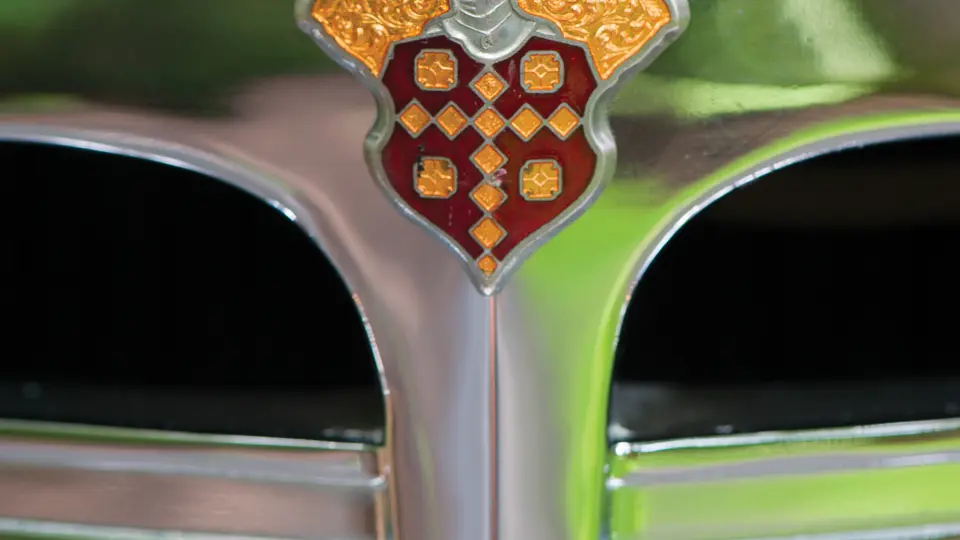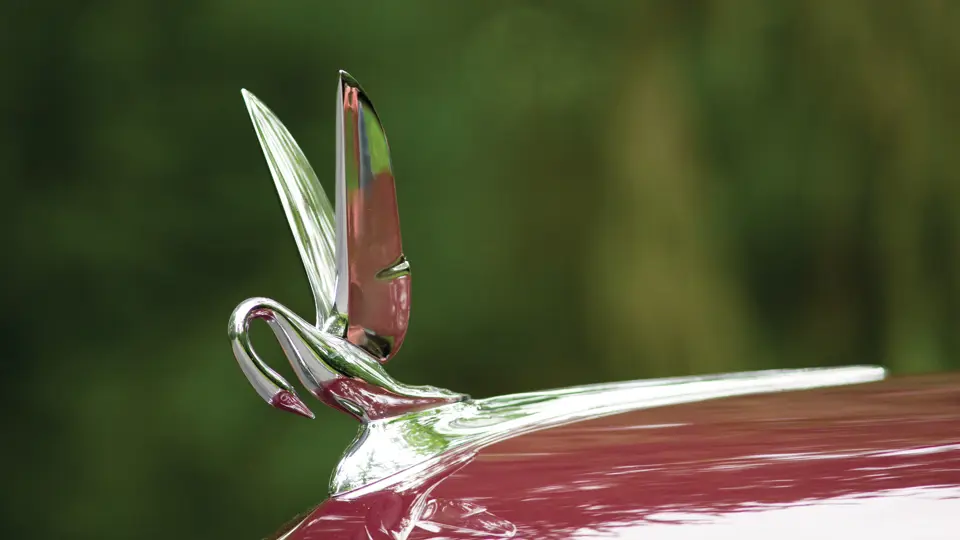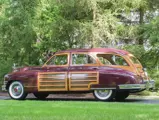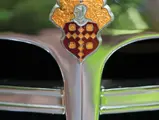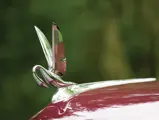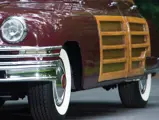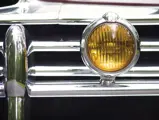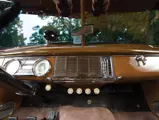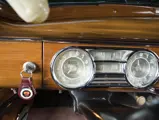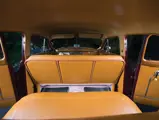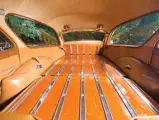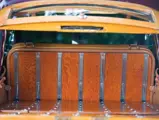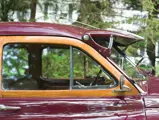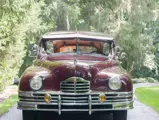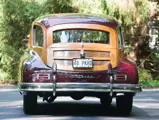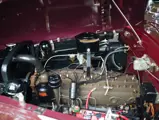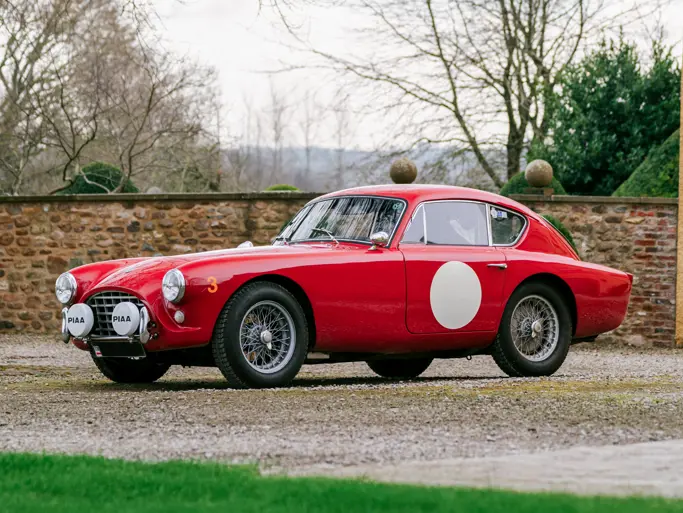130 bhp, 288 cu. in. L-head inline eight-cylinder engine, three-speed manual transmission with overdrive, independent coil-spring front suspension, live rear axle with semi-elliptic leaf springs, and four-wheel hydraulic drum brakes. Wheelbase: 120 in.
Prior to World War II, Packard built wood-bodied station wagons in both the six-cylinder 115 and eight-cylinder One-Twenty variants. However, the new Clipper styling in 1941 was not compatible with timber construction. After the war, production of the Clipper resumed, and wagons were no longer constructed. By 1948, Packard introduced its all new 22nd series, which was a wider and lower adaptation of the sleek Clipper lines. This did not allow for the use of the perpendicular-style wagons still being produced by the Big Three. Packard pointed the way to the hybrid wagon, which was a design that consisted of a steel substructure augmented by wood frames and panels on the doors and upper body, and one that would eventually be embraced by Ford.
To manufacture their new car, Packard took four-door, six-passenger sedans off the production line, and the body supplier, Briggs Manufacturing Company, changed the roofline to incorporate a liftgate and tailgate. Using ash and maple, Briggs converted the sedan into a full station wagon, with steel supports at the B-posts and D-posts. This model was the most expensive of the short-wheelbase Packards, selling for $3,424. For many buyers, the price was well worth it, as the station sedan combined both practicality and a fantastic sense of style.
Retaining its original color of Cavalier Maroon over a tan interior, this 1948 Eight Station Sedan is a fantastic example of a post-war Packard. The car was last restored in the mid-1990s while part of a large collection of classic cars. It was purchased by its current owner shortly thereafter, and it has been lovingly cared for and enjoyed ever since. The interior of the car shows very few signs of wear, and the wood paneling in the trunk is just as nice as the wood on the exterior of the car, which fantastically complements the maroon paint. Folding the rear seats down gives a spectacular view of the wood trim throughout the car, and the high quality woodwork would certainly appeal to someone who lusts after wooden boats of the same era. Highly optioned from the factory, this Station Sedan includes driver’s side and passenger’s side spotlights, fog lights, an AM radio, and a heater with flow-through ventilation. Service receipts from the restoration and current ownership, along with a spare tire, jack, and a reproduction of the owner’s manual, are included with the vehicle.
The car is very comfortable cruising at motorway speeds, and it is a wonderful driver that will surely garner lots of attention at local car shows. It will surely be enjoyed by its next owner for its versatility and appeal, which combines both fun and practicality for a family looking to enjoy a classic car together. Rare and beautiful, it is the ideal car to round out a collection of original Packards.
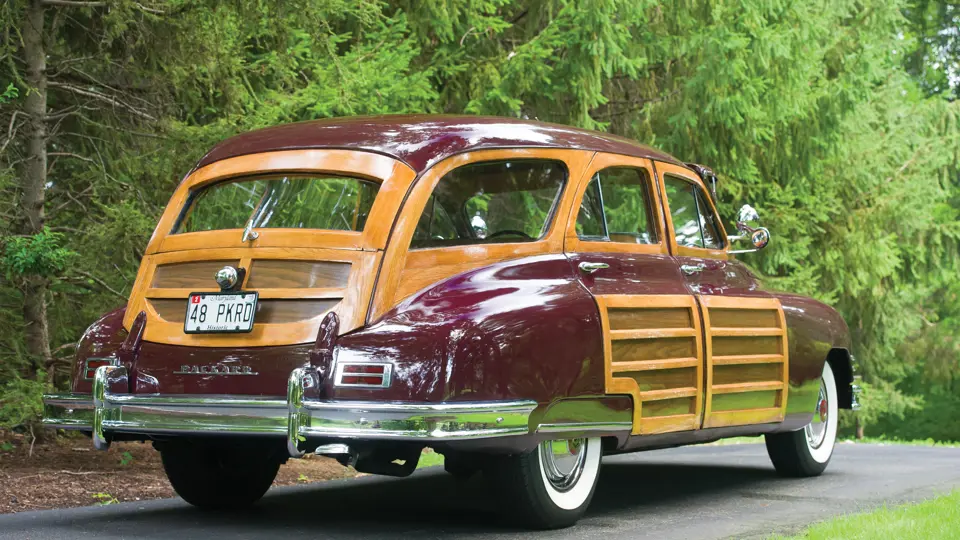
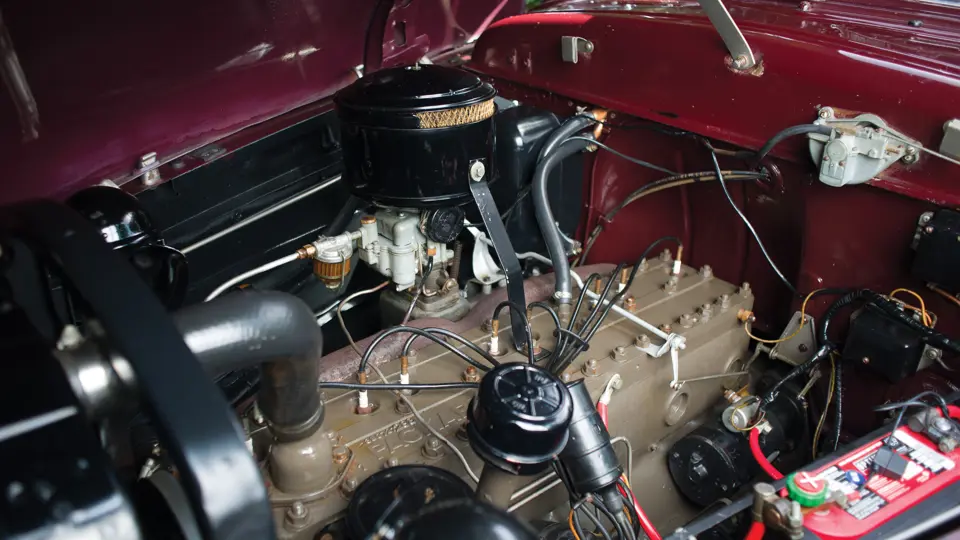


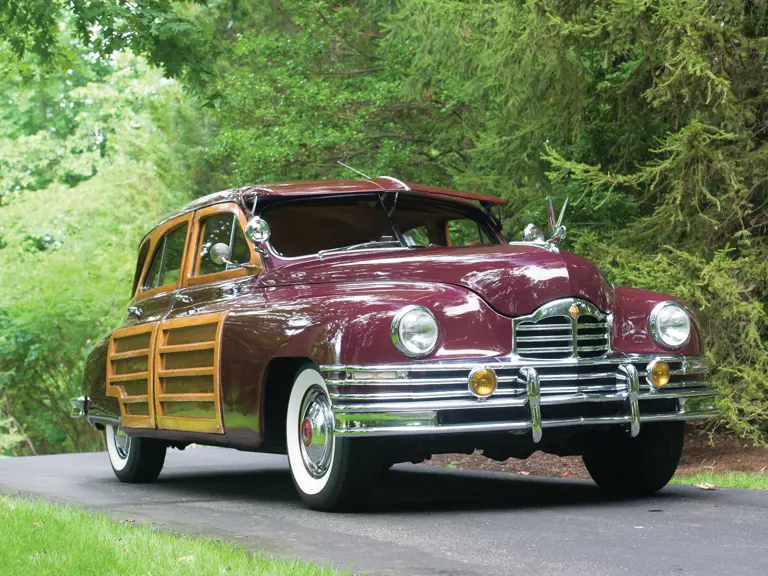
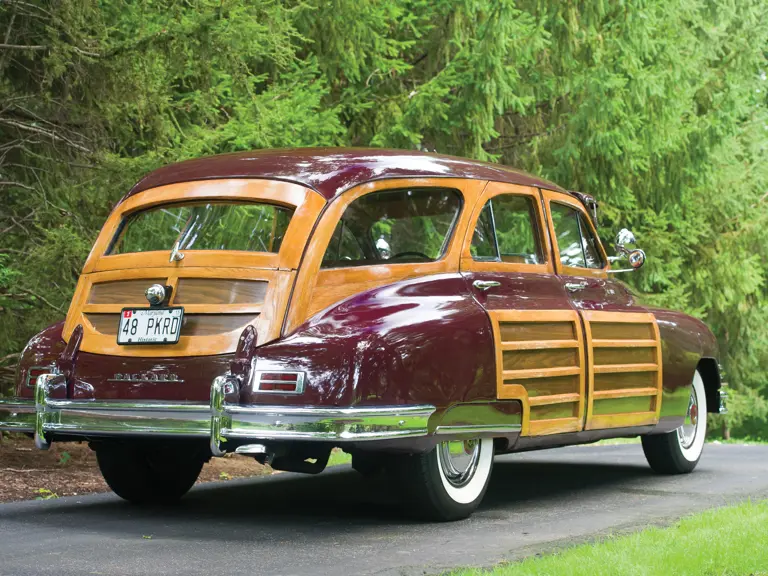
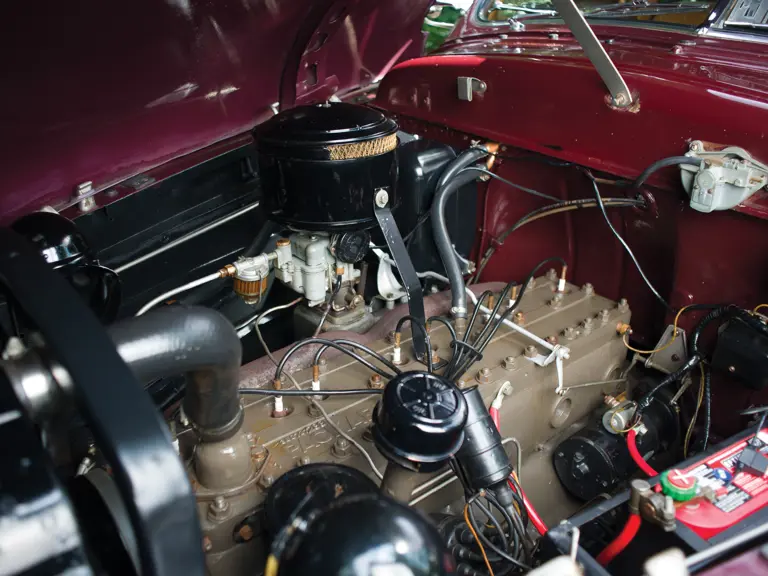
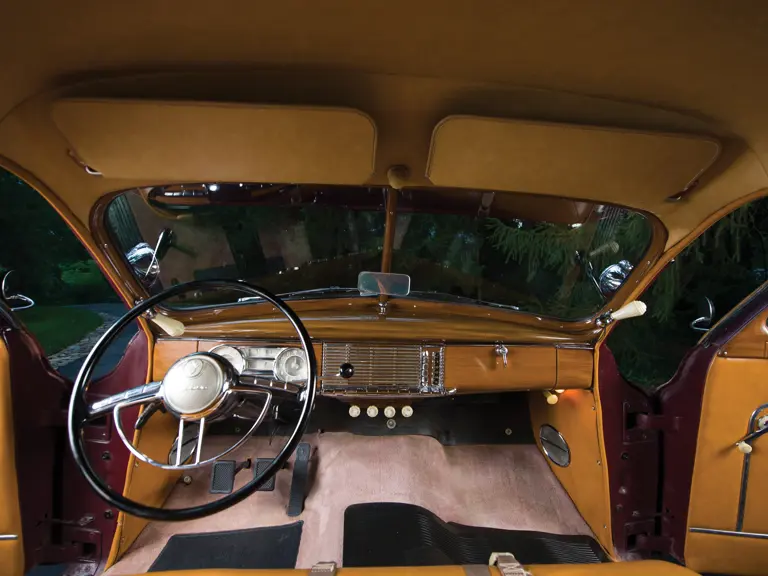
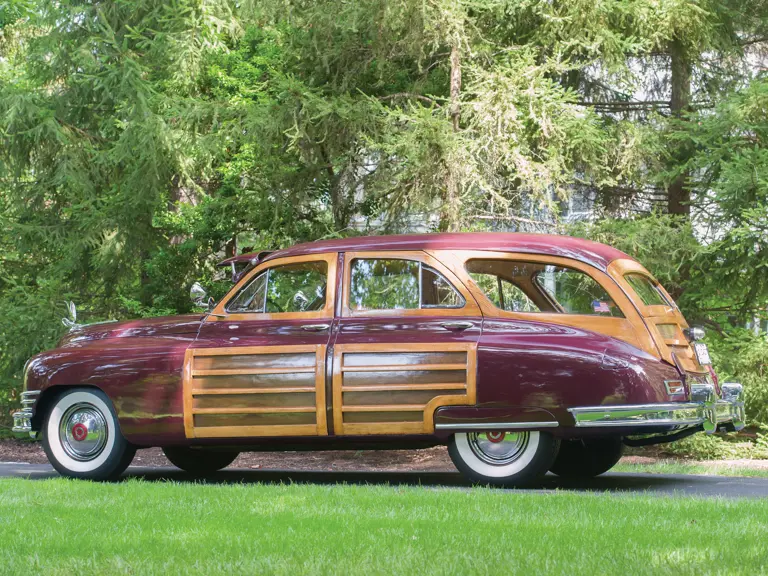

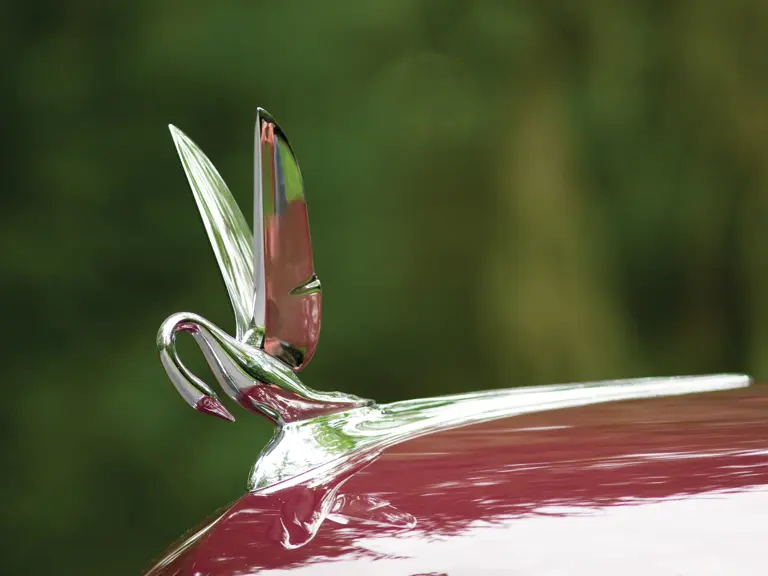
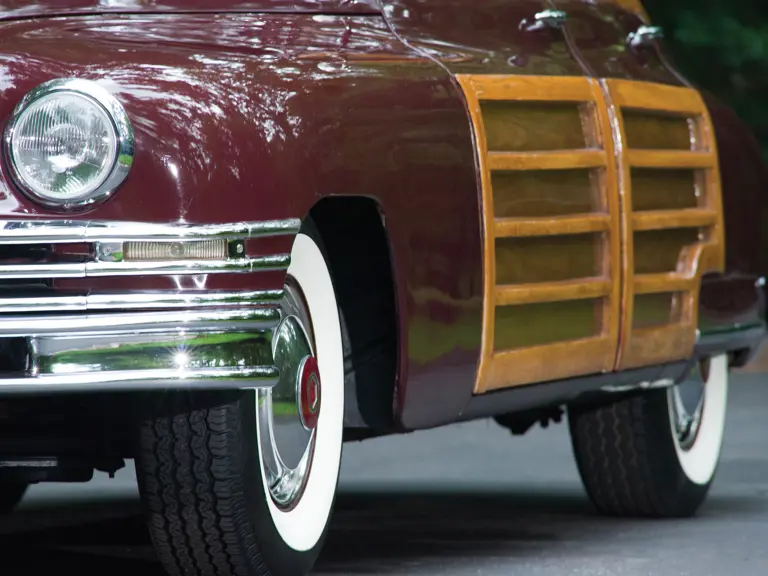
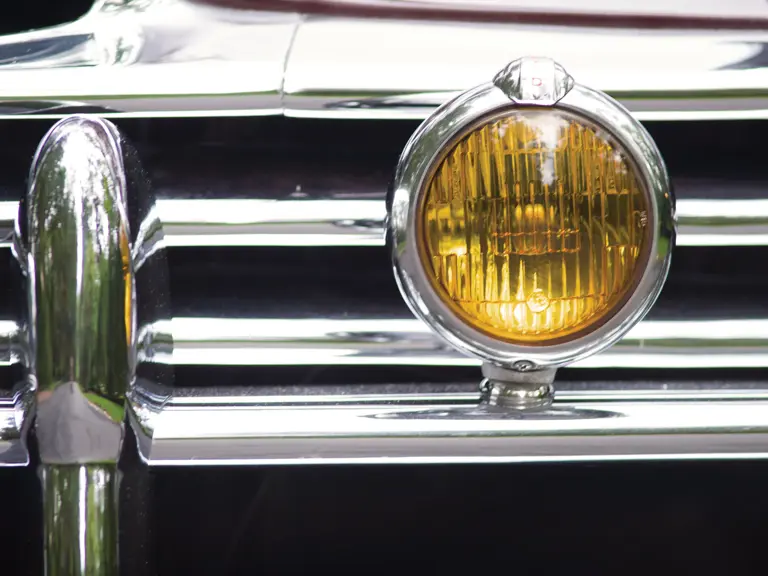
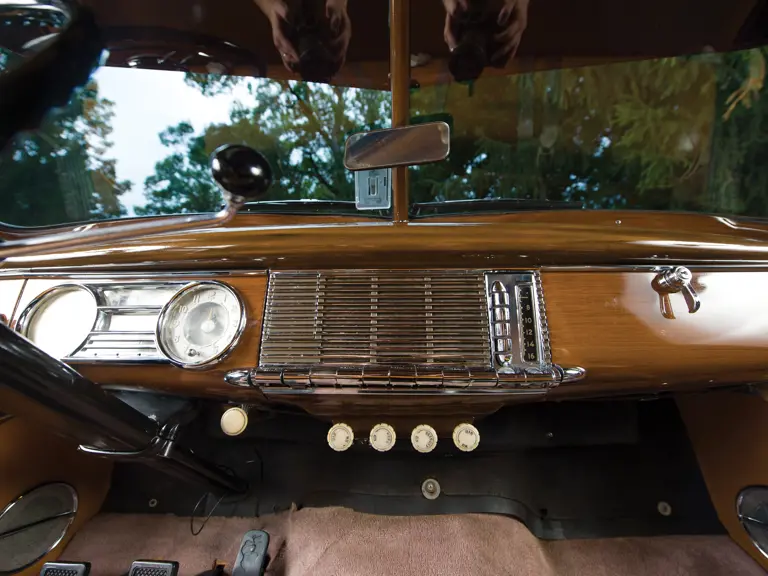

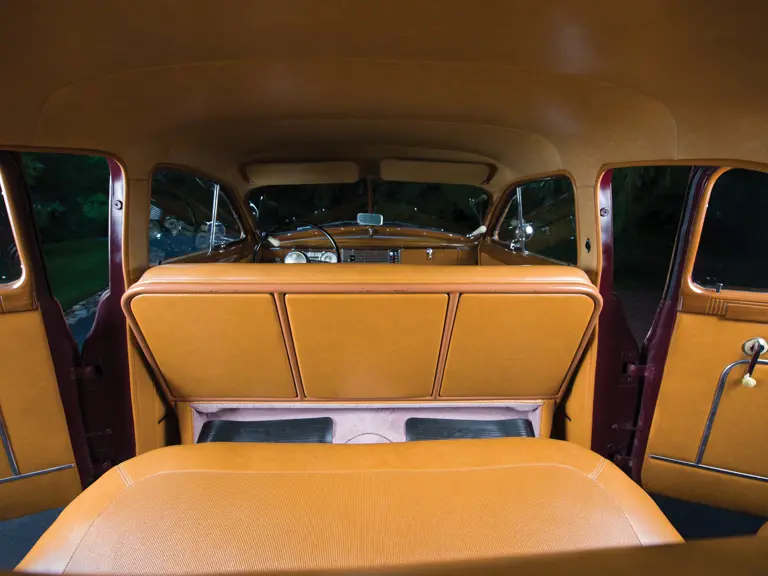
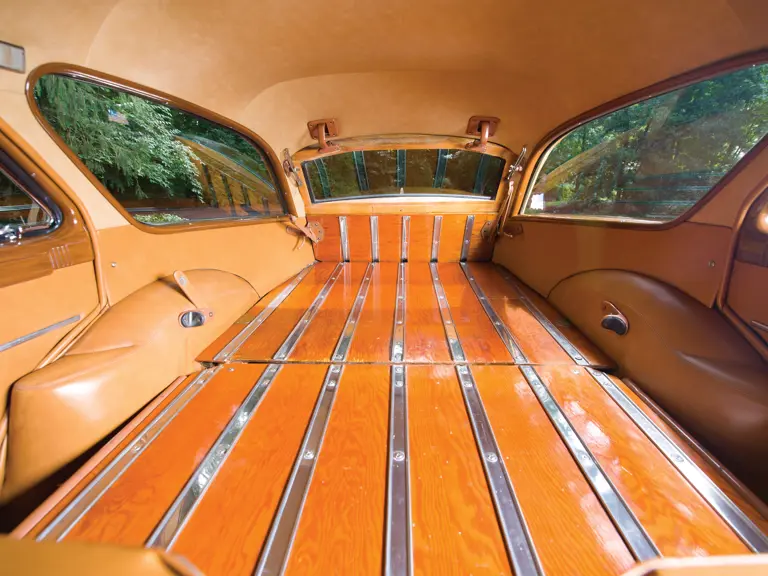
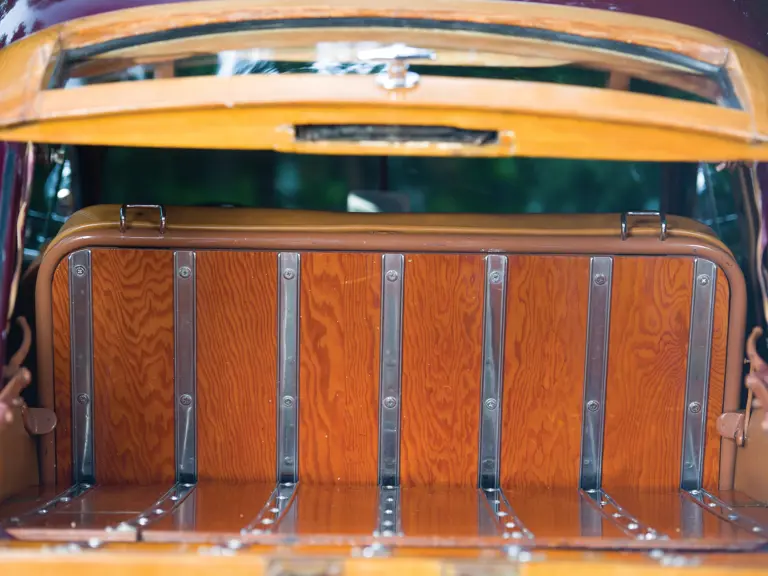

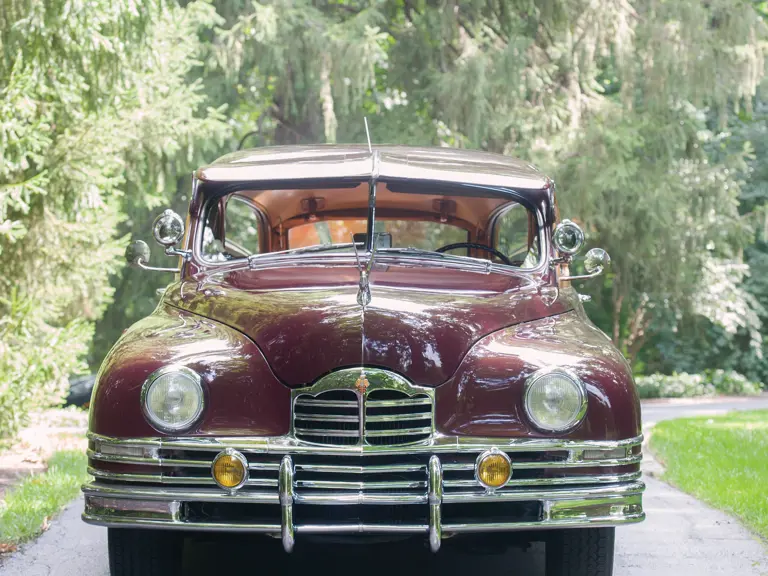

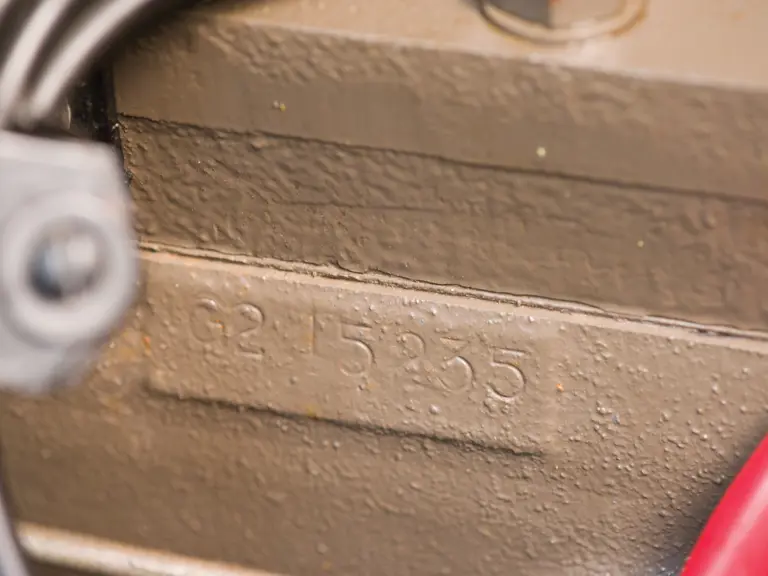
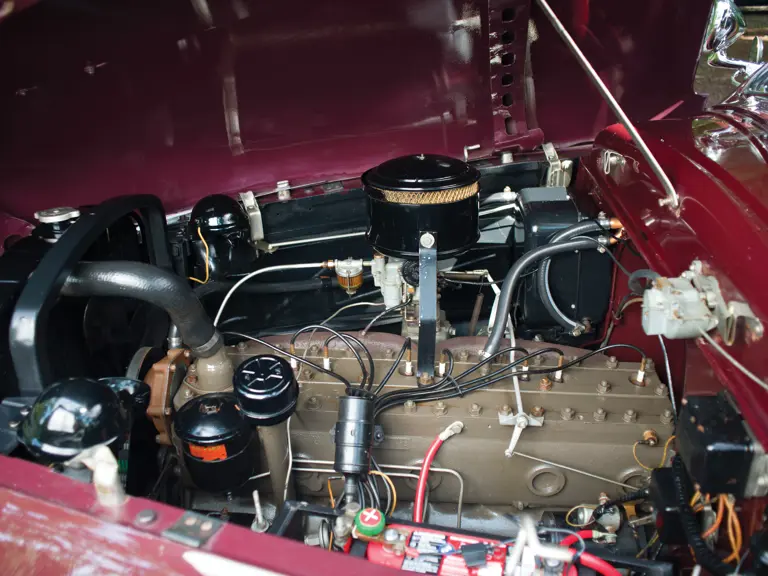
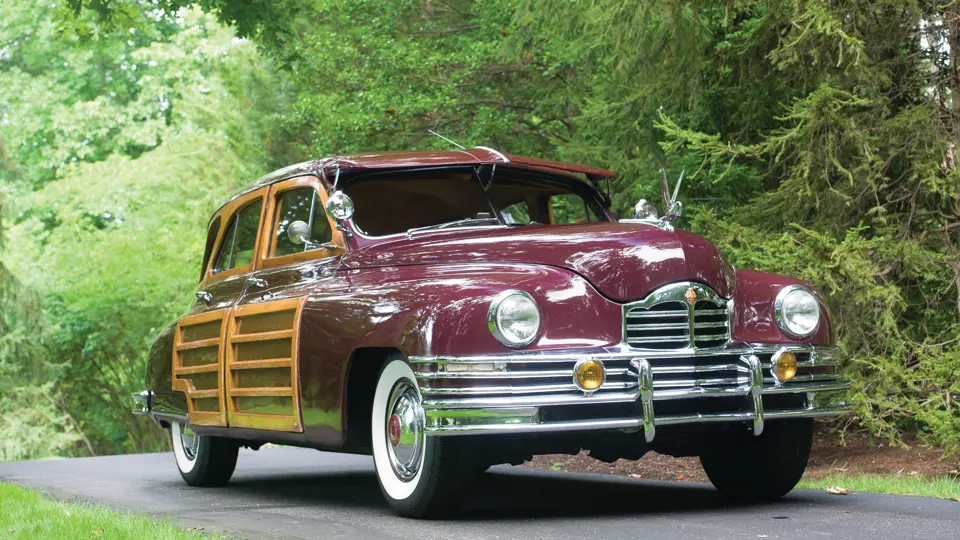
 | Hershey, Pennsylvania
| Hershey, Pennsylvania
